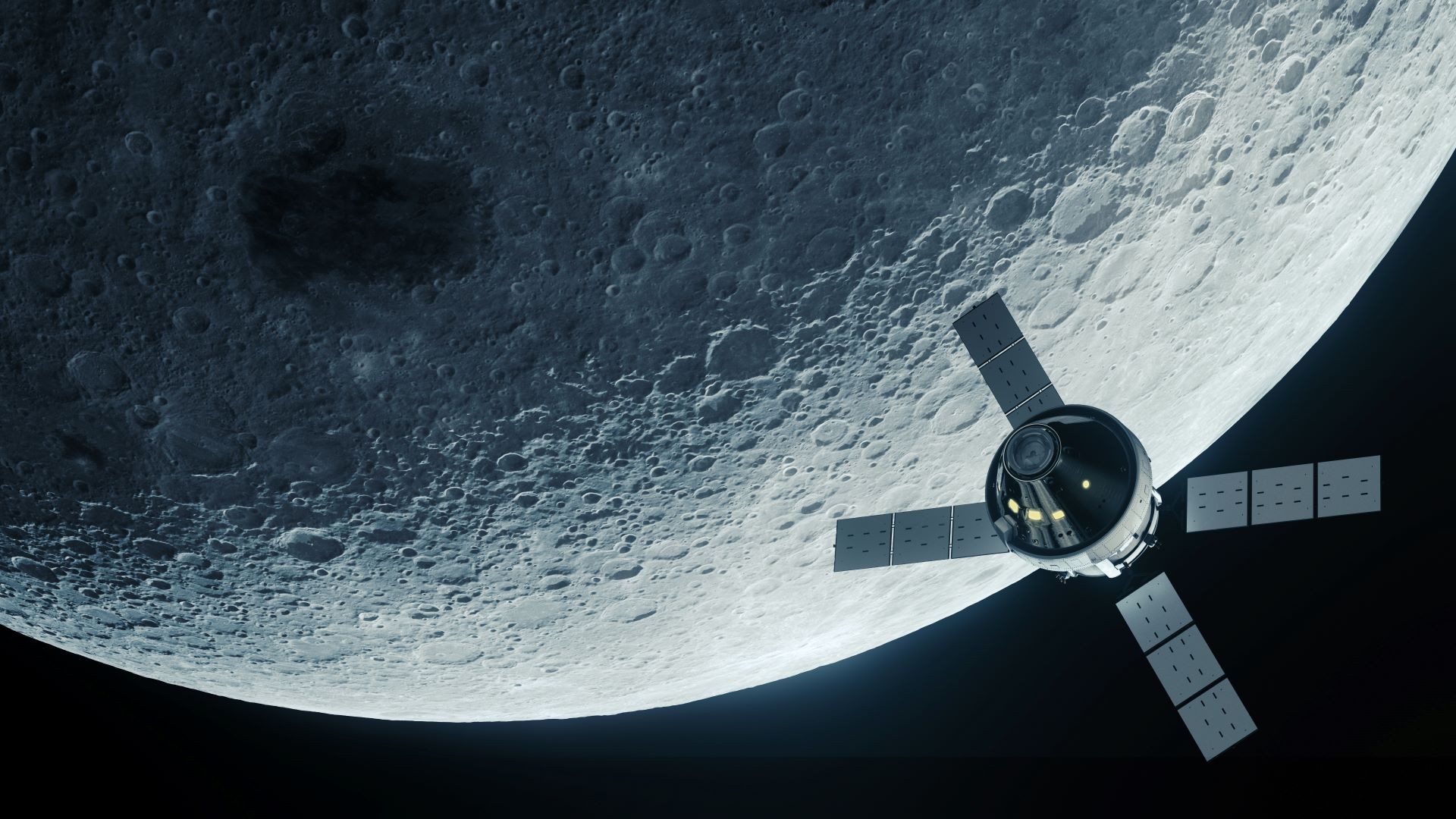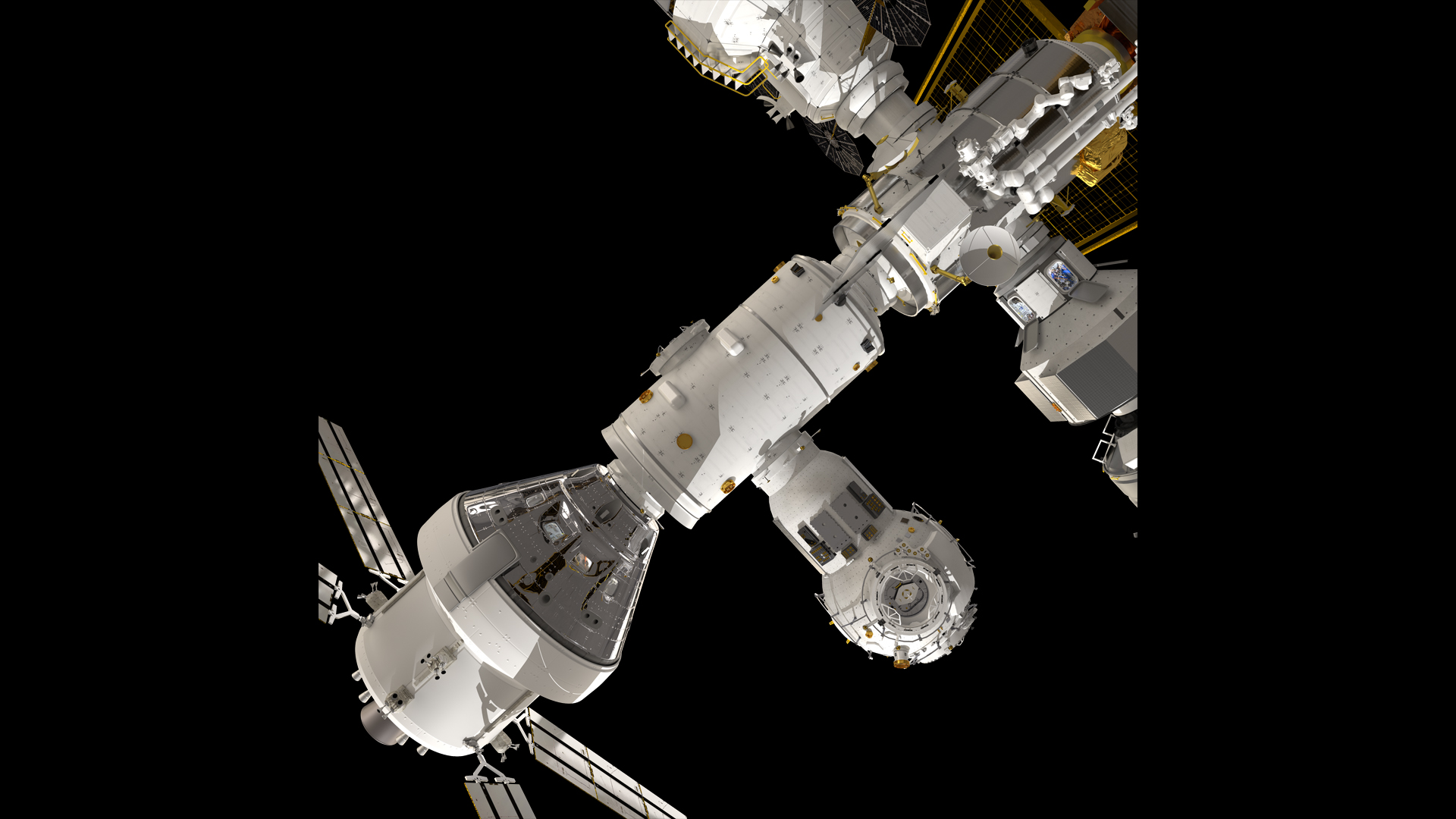Artemis 4 and Artemis 5 moon missions will include European astronauts (exclusive interview)
"I do everything to make sure that our commitment will be met," European Space Agency chief Josef Aschbacher tells Space.com.

CAPE CANAVERAL, Fla. — We now know when Europeans will land on the moon alongside NASA astronauts.
Both the Artemis 4 and Artemis 5 moon-landing missions, which are slated to launch in 2028 and 2029, respectively, will feature one European Space Agency astronaut, ESA Director Josef Aschbacher told Space.com. Another ESA astronaut is guaranteed to fly on a future Artemis moon mission, but which one is not decided yet.
"I'm very happy and very proud that NASA is relying on Europe as a partner in providing critical elements" for Artemis missions, Aschbacher said.
He was speaking on July 1 hours after the launch of Euclid, an ESA-led "dark universe" mission that also has NASA participation, and said the agencies seek to have a good dialogue about expectations for all missions. "I do everything to make sure that our commitment will be met," Aschbacher added.
Related: Artemis 1 paves way for European tech and astronauts on the moon
Eight member states of ESA are signatories to the NASA-led Artemis Accords, which aim to set a path for moon exploration and to establish international peaceful norms for space exploration. The addition of India and Ecuador last month brings the number of Artemis Accord signatories to 27.
Europe is also contributing the service module, which supplies electricity and other resources, for NASA's Orion spacecraft, which will carry Artemis astronauts to the moon. And ESA is supplying (in partnership with Japan) a habitat module and a refueling module for NASA's moon-orbiting Gateway space station, a key piece of Artemis infrastructure.
Breaking space news, the latest updates on rocket launches, skywatching events and more!
ESA officials previously said that, in exchange, the agency will receive three flight opportunities for European astronauts to launch on Artemis missions, but did not name those flights.

ESA also continues to send astronauts to the International Space Station, including Denmark's Andreas Mogensen, who is set to launch on SpaceX's Crew-7 mission on Aug. 15. European astronauts, slated to launch on shorter ISS missions, are also in training with the private company Axiom Space, which uses SpaceX hardware for space missions. Marcus Wandt, from Sweden, will be the first of the group on Ax-3, set to launch in late 2023.
Additionally, discussions are ongoing as to how to bring John McFall — a former Paralympian trauma surgeon selected as an astronaut candidate last year — to the ISS, Aschbacher said. "We have to do a study ... (concerning) whether adaptations need to be made on the interface on the space station" to allow for the flight, he said.
Aschbacher added that the member states of ESA continue to discuss how to get its astronauts to space in the coming years. The agency is debating whether to develop its own spacecraft and infrastructure for missions; discussions will continue at its Space Summit on Nov. 6 and 7, he noted.
Related: Swedish astronaut 'fast-tracked' to join crew of upcoming private Axiom Space mission
Artemis missions are already underway. In November 2022, NASA launched Artemis 1, an uncrewed round-the-moon trip that sent several mannequins and science experiments on a test of Orion and the Space Launch System rocket.
The first crewed mission of the program, Artemis 2, is expected to launch in November 2024 to go around the moon and back. Its quartet of astronauts, named in April 2023, will be the first people to head toward the moon in more than 50 years. Canadian Jeremy Hansen will fly with three NASA astronauts in exchange for Canadarm3, slated to launch to Gateway later in the decade.
NASA then plans to follow up the effort with the Artemis 3 surface mission no earlier than 2025 or 2026, pending readiness of SpaceX's Starship system, which will serve as the mission's lunar lander. The launch dates of Artemis 4 and 5 may therefore adjust depending on when Artemis 3 touches down.
This article was corrected on July 12 to reflect the number of ESA signatories to the Artemis Accords.
Elizabeth Howell was in Florida to cover Euclid's launch under co-sponsorship by Canadian Geographic magazine and Canada's University of Waterloo. Space.com has independent control of its news coverage.
Join our Space Forums to keep talking space on the latest missions, night sky and more! And if you have a news tip, correction or comment, let us know at: community@space.com.

Elizabeth Howell (she/her), Ph.D., was a staff writer in the spaceflight channel between 2022 and 2024 specializing in Canadian space news. She was contributing writer for Space.com for 10 years from 2012 to 2024. Elizabeth's reporting includes multiple exclusives with the White House, leading world coverage about a lost-and-found space tomato on the International Space Station, witnessing five human spaceflight launches on two continents, flying parabolic, working inside a spacesuit, and participating in a simulated Mars mission. Her latest book, "Why Am I Taller?" (ECW Press, 2022) is co-written with astronaut Dave Williams.
